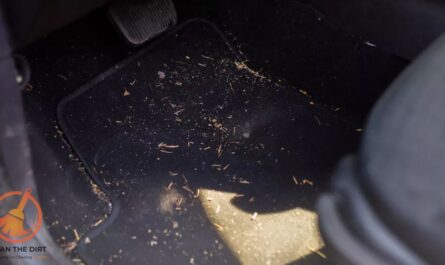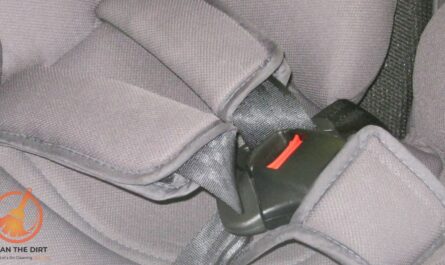Table of Contents
Introduction
Welcome to this ultimate guide on how to clean car seats fabric yourself. Your car is more than just a mode of transportation, it’s your shelter on wheels, where countless memories are made and adventures unfold. However, over time, the fabric on your car seats can accumulate dirt, stains, and odors, diminishing the comfort and appeal of your beloved vehicle. But fear not, With the right know-how and a can-do attitude, how to clean car seats fabric yourself becomes a manageable task that can breathe new life into your car’s interior.
In this comprehensive guide, we’ll walk you through the step-by-step process of how to clean car seats fabric yourself, empowering you to tackle stains and dirt like a seasoned pro. Whether you’re dealing with spilled coffee, muddy paw prints, or just the general wear and tear of everyday life, our easy-to-follow tips and tricks will help you achieve sparkling results.
So, grab your cleaning supplies and get ready to transform your car’s interior from drab to fab. With our expert guidance, you’ll be amazed at the difference a little DIY TLC can make for your car seat fabric. Let’s dive in and rediscover the joy of a fresh, clean ride.
Understanding the Fabric
Before diving into the how to clean car seats fabric yourself process, it’s essential to understand the fabric you’re dealing with. Car seats can be coated in various materials, each requiring a slightly different approach to cleaning. Let’s take a closer look at the most common types of car seat fabrics and the best practices for cleaning them.
1. Cloth Fabric
Cloth fabric is a popular choice for car seats due to its durability and comfort. It’s typically made from synthetic fibers or blends of natural and synthetic materials. When cleaning cloth fabric, it’s essential to use gentle cleaning solutions and avoid excessive scrubbing, which can damage the fibers. Vacuuming regularly to remove surface dirt and debris is also key to maintaining cloth seats.
2. Leather
Leather seats exude luxury and sophistication, but they require special care to keep them looking their best. When cleaning leather seats, use a mild leather cleaner and conditioner to gently remove dirt and nourish the leather. Avoid using harsh chemicals or abrasive brushes, as they can cause damage and discoloration. Additionally, it’s crucial to protect leather seats from prolonged exposure to sunlight, which can cause them to fade and crack over time.
3. Vinyl
Vinyl seats are a practical choice for vehicles, as they are durable, easy to clean, and resistant to stains. To clean vinyl seats, simply wipe them down with a mild soap and water solution using a soft cloth or sponge. Avoid using harsh chemicals or abrasive tools, as they can damage the vinyl surface. Regular cleaning and conditioning can help preserve the appearance and longevity of vinyl seats.
4. Microfiber
Microfiber seats offer a luxurious feel and excellent stain resistance, making them a popular choice for car lovers. To clean microfiber seats, use a gentle fabric cleaner specifically designed for microfiber fabrics. Lightly scrub any stains with a soft brush or cloth, then blot the area with a clean, damp cloth to remove excess moisture. Avoid using excessive water or harsh cleaning agents, as they can damage the delicate fibers of microfiber seats.
By understanding the type of fabric used in your car seats, you can tailor your cleaning approach to ensure optimal results while preserving the integrity of the material. Armed with this knowledge, you’re ready to follow the steps of this guide on how to clean car seats fabric yourself and restore your vehicle’s interior to its former glory.
Preparing for Cleaning
Before you roll up your sleeves and dive into the process of how to clean car seats fabric yourself, it’s essential to gather your supplies and prepare your vehicle for a thorough cleaning session. By taking the time to prepare properly, you’ll ensure a smooth and effective cleaning experience. Here’s what you’ll need to get started.
Gather Your Supplies
1. Upholstery Cleaner
Choose a gentle upholstery cleaner suitable for the type of fabric used in your car seats. Look for a product that is specifically formulated to remove stains and dirt without causing damage.
2. Soft-Bristled Brush
Choose a soft-bristled brush or upholstery brush to gently mix the cleaner and lift dirt and stains from the fabric.
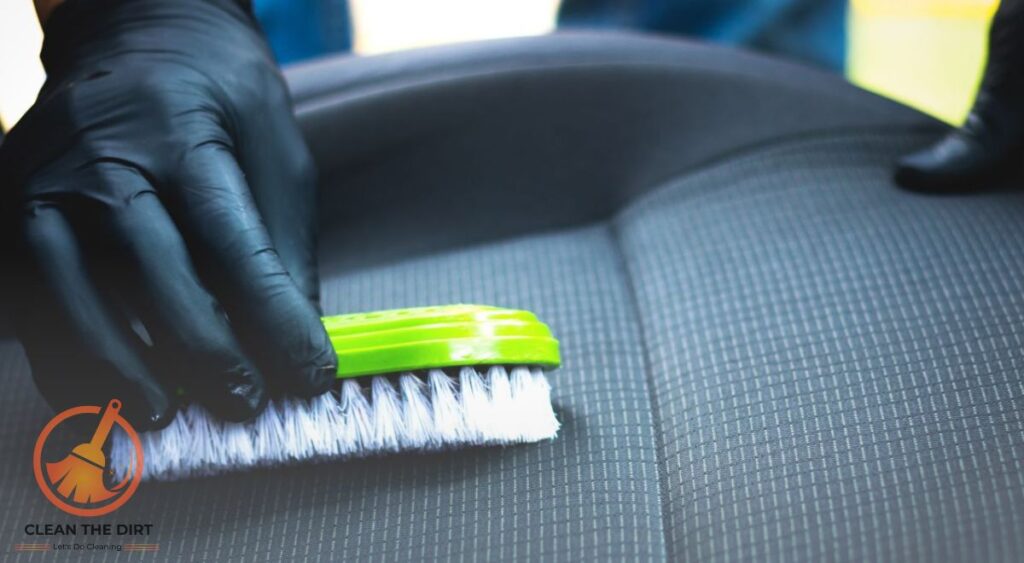
3. Microfiber Cloth or Sponge
Use a microfiber cloth or sponge to apply the cleaner and blot away excess moisture during the cleaning process. Microfiber materials are gentle on the fabric and help prevent streaks or damage.
4. Vacuum Cleaner with Attachments
Before cleaning, vacuum the car seats thoroughly to remove loose dirt, crumbs, and debris. Use a vacuum cleaner with upholstery attachments to reach into crevices and along seams.
5. Protective Gloves
While most upholstery cleaners are safe to use, wearing protective gloves can help protect your hands from prolonged exposure to cleaning agents.
6. Bucket of Warm Water
Keep a bucket of warm water nearby to rinse out your cloth or sponge as needed during the cleaning process.
7. Optional: Fabric Protector
Consider applying a fabric protector after cleaning to help repel future stains and spills and prolong the life of your car seats.
Precautions Before Cleaning
1. Check Manufacturer Recommendations
Before applying any cleaning products to your car seats, check the manufacturer’s recommendations and warranty guidelines. Some fabrics may have specific care instructions or restrictions on the use of certain cleaning agents.
2. Test in an Inconspicuous Area
Before cleaning the entire seat, test the upholstery cleaner in a small, hidden area to ensure compatibility and avoid potential damage or discoloration.
3. Ventilate the Area
If possible, clean your car seats in a well-ventilated area to minimize exposure to cleaning fumes and allow for quicker drying.
4. Remove Personal Items
Before cleaning, remove any personal items, debris, or loose objects from the car seats to ensure thorough cleaning and prevent damage to your belongings.
By gathering your supplies and taking these precautions before diving into the cleaning process, you’ll set yourself up for success and ensure a safe and effective experience with this ultimate guide on how to clean car seats fabric yourself. With everything in place, you’re ready to handle those stubborn stains and restore your car’s seats to their new look.
How to Clean Car Seats Fabric Yourself? A Step-by-Step Guide
How to cleaning car seats fabric doesn’t have to be a daunting task. With the right approach and a bit of elbow grease, your car’s interior can be brought back to its previous splendor. Start by following these easy steps.
Step 1: Prep Your Workspace
Before you begin, gather all the necessary supplies. You’ll need a vacuum cleaner with a brush attachment, an upholstery cleaner or a mixture of gentle detergent and water, a soft-bristled brush or microfiber cloth, and optionally, a fabric protectant.
Step 2: Assess the Situation
Take a moment to inspect your car seats fabric. Identify any visible stains or areas of heavy soiling. This will assist you in choosing the most effective cleaning method.
Step 3: Vacuum Away Dirt and Debris
Fire up your vacuum cleaner and thoroughly vacuum the car seats fabric. Particular attention should be given to seams and cracks where crumbs and dirt sometimes collect.
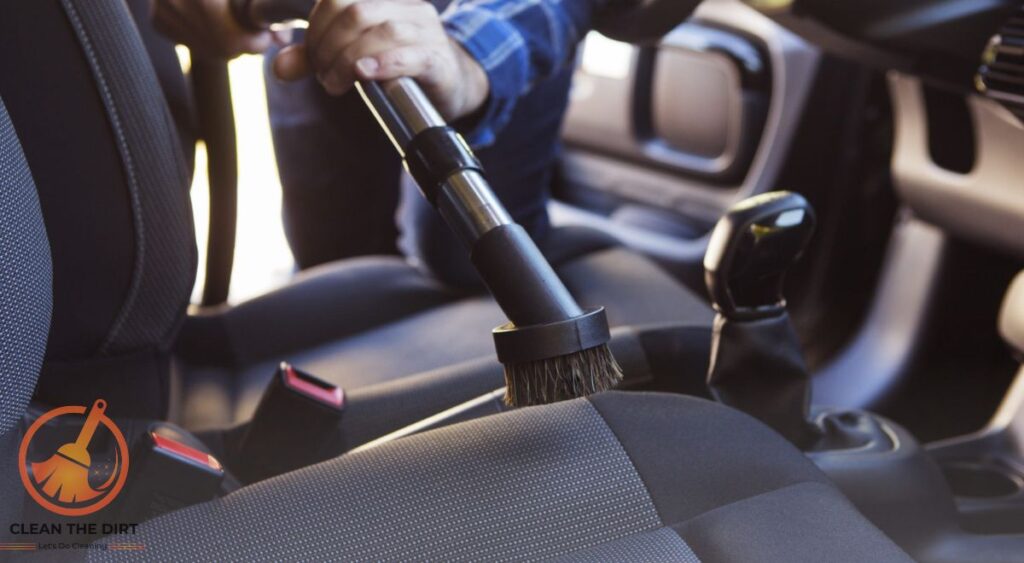
Step 4: Spot Test
Before diving into the cleaning process, it’s always a good idea to spot test your chosen cleaner on a small, unnoticeable area of the fabric. This will ensure that it won’t cause any damage or discoloration.
Step 5: Apply the Cleaner
Using a soft-bristled brush or a microfiber cloth, apply the upholstery cleaner or detergent solution to the car seats fabric. Work in small sections and focus on areas with visible stains or grime buildup.
Step 6: Scrub Gently
Gently scrub the fabric with the cleaner, using circular motions. Avoid using excessive force, as this could damage the fabric. As you clean, take your time and be meticulous.
Step 7: Rinse and Repeat
After scrubbing, use a clean damp cloth to rinse off the cleaning solution from the fabric. Repeat the process if necessary to ensure all dirt and stains are removed.
Step 8: Dry Completely
Before reusing the car, let the seats air dry fully. Open the windows or use a fan to speed up the drying process, if needed.
Step 9: Apply Fabric Protectant (Optional)
For added protection against future stains and spills, consider applying a fabric protectant specifically designed for car upholstery. Follow the manufacturer’s instructions carefully for best results.
Step 10: Admire Your Handiwork
Stand back and admire your freshly cleaned car seats fabric. Enjoy the satisfaction of knowing that you tackled the task yourself and achieved great results.
By following the steps of this guide on how to clean car seats fabric yourself, you can keep your car’s interior looking clean and fresh without the need for professional help.
Dealing with Stubborn Stains
Stubborn stains on car seats fabric can be frustrating, but with the right approach, you can tackle them effectively. Follow these simple steps in this guide on how to clean car seats fabric yourself to remove even the toughest stains.
Step 1: Assess the Stain
Before you begin, take a close look at the stubborn stain. Is it grease, ink, or perhaps a stubborn food spill? Understanding the nature of the stain will help you choose the best cleaning method.
Step 2: Act Quickly
Taking quick action is essential when dealing with tough stains. It will be more difficult to remove a stain from fabric the longer it has been there. Don’t delay, start treating the stain as soon as you notice it.
Step 3: Blot, Don’t Rub
If the stain is still fresh, start by blotting it with a clean cloth or paper towel. Avoid pressing the stain as this may encourage it to spread and penetrate deeper into the cloth.
Step 4: Choose the Right Cleaner
Select a cleaner that’s suitable for the type of stain you’re dealing with and safe for car seats fabric. For grease stains, a degreaser may be necessary, while ink stains may require a specialized ink remover.
Step 5: Spot Test
Before applying the cleaner to the entire stain, it’s important to perform a spot test on a small, discreet area of the fabric. By doing this, you can be confident that the cleaner won’t leave any stains or damage behind.
Step 6: Apply the Cleaner
Once you’ve done a spot test mentioned in this guide on how to clean car seats fabric yourself and confirmed that it’s safe to proceed, apply the cleaner to the stain. Use a soft-bristled brush or a clean cloth to gently work the cleaner into the fabric, starting from the outside of the stain and working your way in.
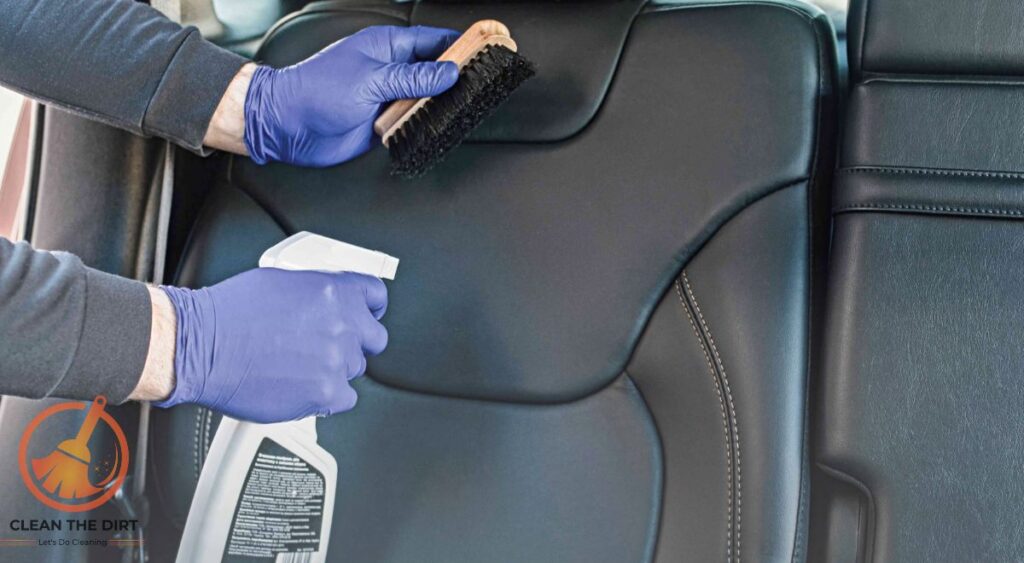
Step 7: Let it Sit
To penetrate and loosen the stain, let the cleanser sit on it for a few minutes. When you start cleaning, it will be simpler to remove as a result.
Step 8: Scrub Gently
Using gentle pressure, scrub the stained area with a brush or cloth. Work in circular motions, gradually working your way towards the center of the stain. Be patient and persistent, but avoid scrubbing too hard, as this could damage the fabric.
Step 9: Rinse and Repeat
After scrubbing, use a clean damp cloth to rinse off the cleaner from the fabric. If the stain is still visible, repeat the cleaning process until it’s completely gone.
Step 10: Dry Thoroughly
Once the stain has been removed, allow the car seat fabric to air dry completely before using the vehicle again. This will prevent any remaining moisture from causing mold or mildew growth.
By following these steps for how to clean car seats fabric yourself, for dealing with stubborn stains, you can effectively improve your car’s interior look.
Additional Tips for Maintaining
This guide on how to clean car seats fabric yourself doesn’t end after the initial cleaning. Regular maintenance is key to preserving its cleanliness and appearance for the long term. Here are some additional tips to help you maintain your car seats fabric.
1. Vacuum Regularly
Make vacuuming your car seats fabric a part of your regular cleaning routine. Use a vacuum cleaner with a brush attachment to remove dust, dirt, and debris from the surface and cracks of the fabric.
2. Address Spills Promptly
Accidents happen, but it’s important to address spills and stains on your car seats fabric as soon as possible. Blot the spill with a clean cloth or paper towel to absorb as much liquid as you can, then follow the spot treatment steps outlined earlier in this guide.
3. Use Fabric Protectant
Consider applying a fabric protectant to your car seats fabric after cleaning. Fabric protectants create a barrier that helps repel stains and spills, making it easier to clean up messes before they become stubborn stains.
4. Avoid Harsh Chemicals
When cleaning your car seats fabric, avoid using harsh chemicals or abrasive cleaners that could damage the fabric. Stick to mild detergents and cleaners specifically formulated for car upholstery.
5. Test New Products
Before using a new cleaning product or method on your car seats fabric, always perform a spot test on a small, inconspicuous area to ensure it won’t cause any damage or discoloration.
6. Protect Against Sun Damage
Prolonged exposure to sunlight can cause fading and deterioration of car seats fabric. Whenever possible, park your car in the shade or use a windshield sunshade to protect the interior from UV rays.
7. Rotate Seat Covers
If your car seats fabric is at risk of damage, consider using seat covers to protect it. Rotate the seat covers periodically to ensure even wear and prevent premature fading or damage to the underlying fabric.
8. Air Out Your Car
To prevent musty odors from developing in your car seats fabric, periodically roll down the windows or use a car air freshener to keep the interior smelling fresh and clean.
By incorporating these additional maintenance tips of this guide on how to clean car seats fabric yourself into your car care routine, you can keep your car’s interior looking clean and fresh for years to come.
Conclusion
Congratulations on taking the initiative to learn how to clean car seats fabric yourself. With the tips and techniques outlined in this guide, you now have the knowledge and confidence to tackle this task like a pro.
By following the step-by-step cleaning process, spot-treating stubborn stains, and incorporating regular maintenance into your car care routine, you can keep your car’s interior looking clean and fresh for the upcoming years.
Remember, maintaining clean car seats fabric not only enhances the appearance of your vehicle but also contributes to a more comfortable and enjoyable driving experience for you and your passengers.
Let’s have a look at the following table which indicates the car seats fabric cleaning methods and their efficiency and productivity.
| Cleaning Method | Description | Pros | Cons |
|---|---|---|---|
| Vacuuming | Using a vacuum cleaner with a brush attachment to remove loose dirt and debris from the fabric | Quick and easy | Limited effectiveness for deep stains |
| Spot Treatment | Targeting specific stains with specialized cleaners or homemade solutions | Effective for treating isolated stains | May not be suitable for larger or deeply ingrained stains |
| Steam Cleaning | Using steam to penetrate the fabric and loosen dirt and stains | Deep cleaning action, can kill bacteria and remove odors | Requires special equipment, potential for fabric damage if not used correctly |
| Upholstery Cleaner | Applying a commercial upholstery cleaner to the fabric and scrubbing with a brush | Effective for overall cleaning and removing stubborn stains | May leave behind residue if not rinsed properly |
| Professional Cleaning | Hiring a professional service to clean car seats fabric using specialized equipment and techniques | Guaranteed results, expert handling of stains and fabrics | Can be expensive and require scheduling appointments |
So, the next time you notice dirt, spills, or stains on your car seats fabric, don’t hesitate to do this task yourself and get to work. With a little effort mentioned in this guide on how to clean car seats fabric yourself and with the right approach, you can achieve great results and take pride in knowing that you did it yourself.
Thank you for reading, and happy cleaning!
Frequently Asked Questions (FAQs)
Is it safe to clean car seats fabric yourself?
Yes, it’s generally safe to clean car seats fabric yourself as long as you use appropriate cleaning products and follow recommended cleaning methods. Avoid harsh chemicals or abrasive cleaners that could damage the fabric.
What are the best cleaning products for car seats fabric?
The best cleaning products for car seats fabric depend on the type of fabric and the nature of the stains you’re dealing with. Mild upholstery cleaners, gentle detergents, and specialized stain removers are often effective options.
How often should I clean my car seats fabric?
The frequency of cleaning car seats fabric depends on factors such as how often you use your vehicle, whether you have pets or children, and how prone the fabric is to staining. In general, aim to clean your car seats fabric every few months or as needed.
Can I use a steam cleaner to clean the car seats fabric?
Steam cleaners can be effective for cleaning car seats fabric, especially for removing stubborn stains and odors. However, it’s important to follow the manufacturer’s instructions and avoid using excessive heat or steam, which could damage the fabric.
How can I prevent mold and mildew from forming on car seats fabric?
To prevent mold and mildew growth on car seats fabric, ensure the fabric is thoroughly dry after cleaning and avoid leaving wet items or spills sitting on the seats for extended periods. Additionally, regularly airing out your vehicle can help prevent moisture buildup.
Can I use household cleaning products like vinegar or baking soda to clean the car seats fabric?
While vinegar and baking soda are natural cleaning agents that can be effective for some types of stains, they may not be suitable for all car seats fabric. It’s best to test these products on a small, inconspicuous area of the fabric first to ensure they won’t cause damage or discoloration.
How can I protect my car seats fabric from future stains and spills?
Applying a fabric protectant specifically designed for car upholstery can help repel stains and spills, making it easier to clean up messes before they become stubborn stains. Additionally, using seat covers or regularly cleaning and maintaining the fabric can help prolong its lifespan and appearance.
You May Also Like: How to Clean Headlights With WD40? An Ultimate Cleanliness


